Razor: Gillette Single Ring
Blade: KAI stainless
Brush: Semogue TSN LE 2012
Lather: Asylum Shave Works Frankincense & Myrrh
Aftershave: Asylum Shave Works Frankincense & Myrrh
Additional Care: Alum Block

Razor: Gillette Single Ring
Blade: KAI stainless
Brush: Semogue TSN LE 2012
Lather: Asylum Shave Works Frankincense & Myrrh
Aftershave: Asylum Shave Works Frankincense & Myrrh
Additional Care: Alum Block
A couple of days ago we had a look at Mr Nordskog’s oddly shaped safety razor, which was patented a hundred years ago. One of the patens which cites Mr Nordskog’s patent is assigned to American Safety Razor Company. Filed by Clemens A Iten in 1984. The later invention appears to be a recreation of the former patent in the shape of a multi-blade, disposable, cartridge monstrosity. One straight edge, one convex edge. No rounded edge on the short side though.
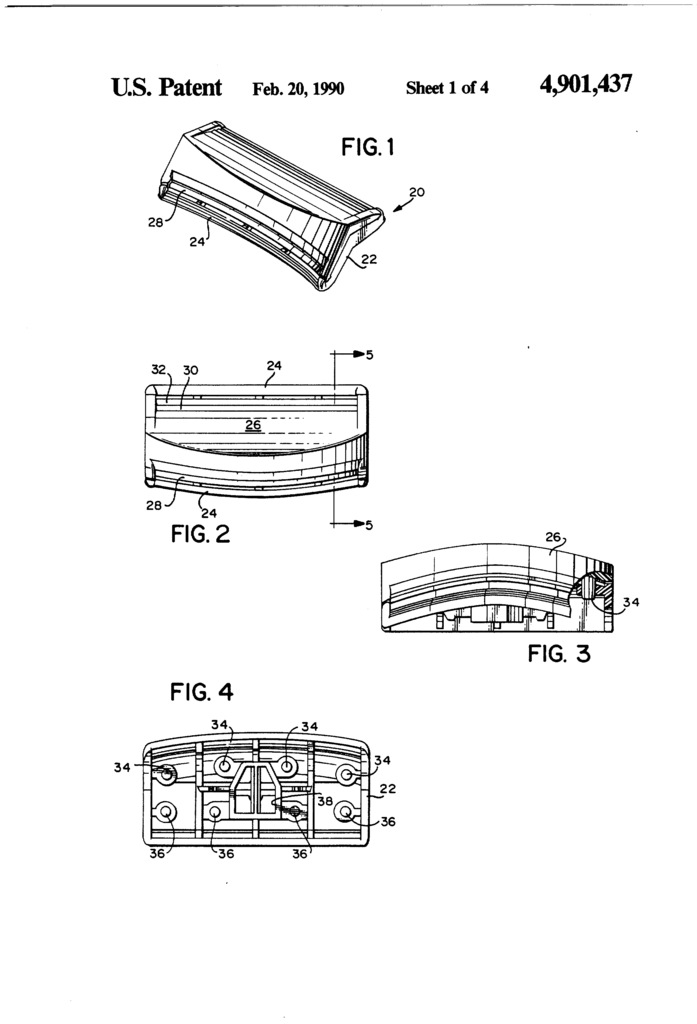
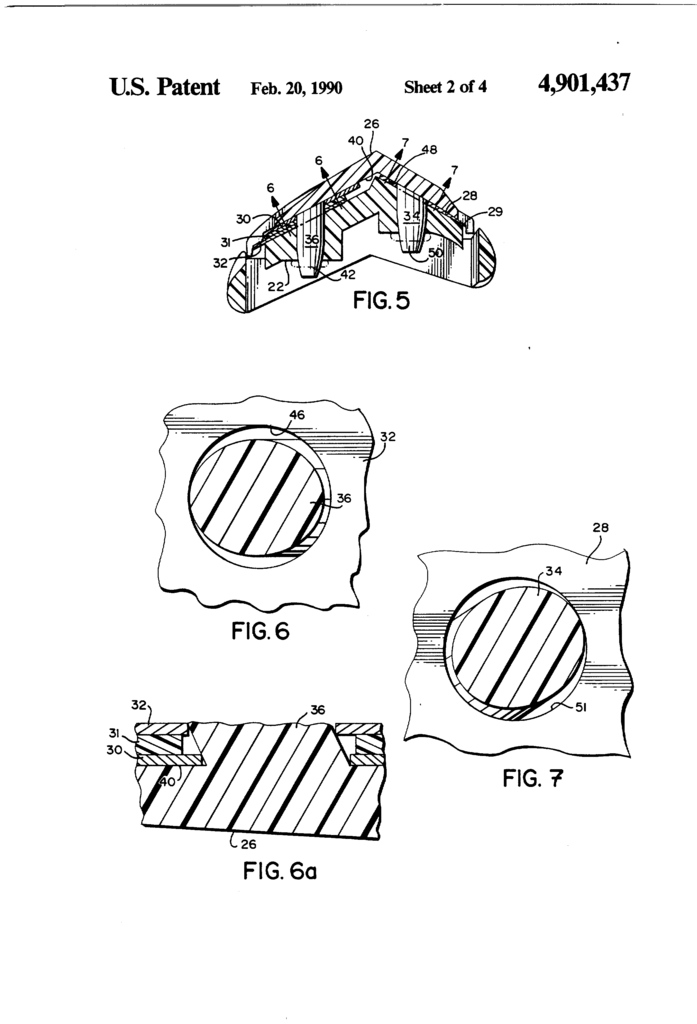
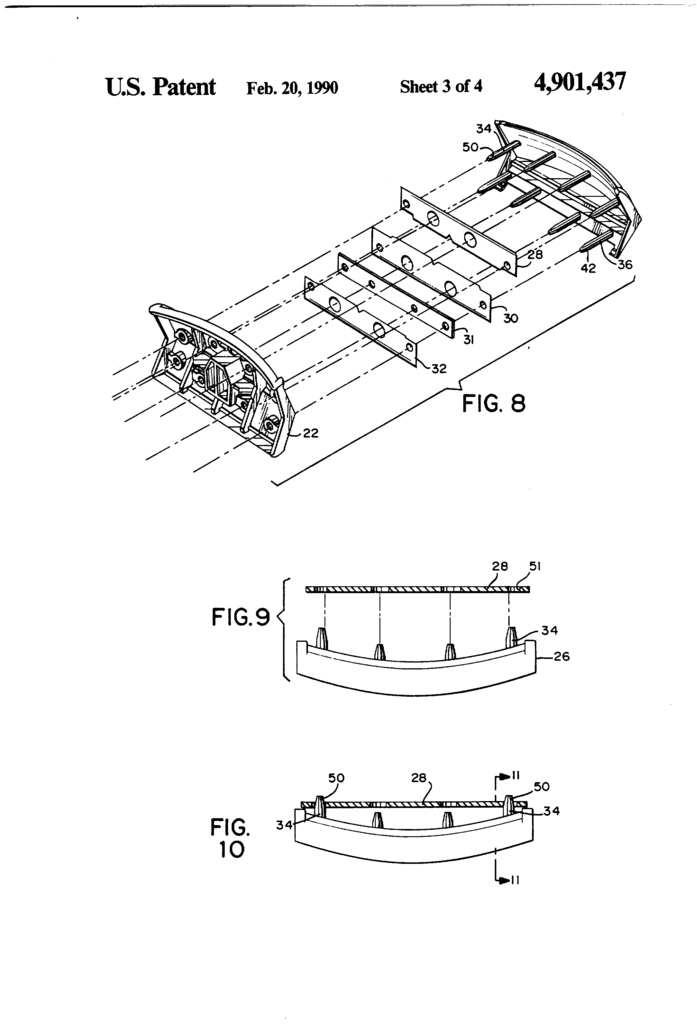
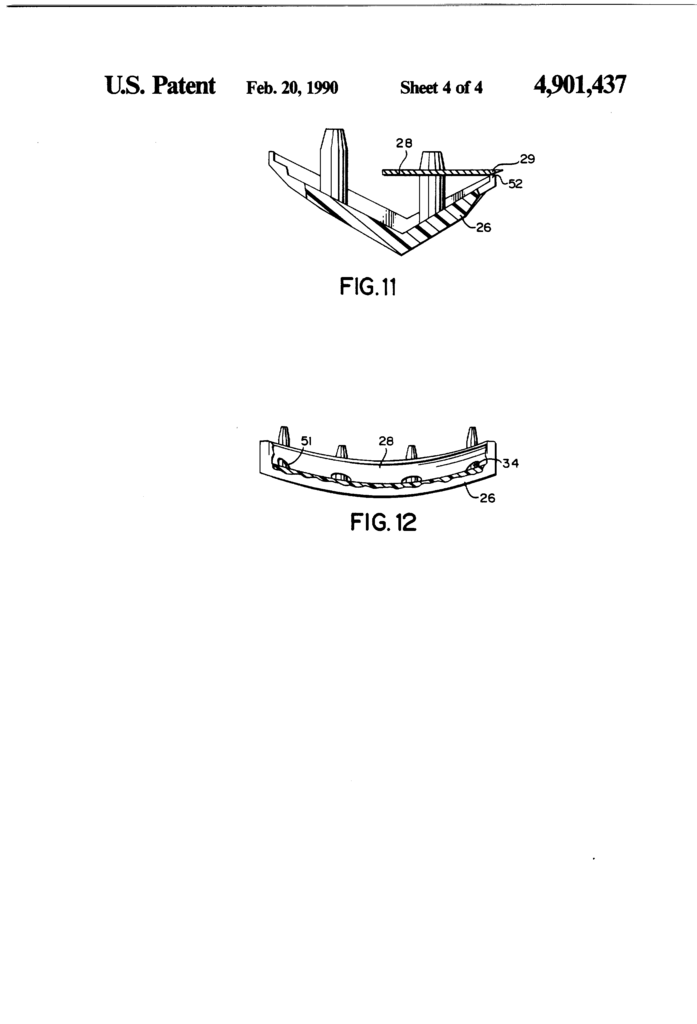
A cap and platform having an elongated longitudinally curved surface with a flexible shaving blade between them seem to be one of the major claims in the patent. Other claims goes into the construction of the cartridge.
The patent in its entirety can be read at Google Patents.
Razor: Gillette Single Ring
Blade: KAI stainless
Brush: Artesania Romera Manchurian Badger, imitation horn
Lather: Brutalt Bra TSN LE / Norwegian Wood
Aftershave: Barber No3 Marmara
Additional Care: Alum Block
Sometimes I peek at a patent because the name of the inventors reminds me of someone. This was one of those times, and I’m happy I did. Mr Nordskog filed his patent for a “new and useful safety-razor” in early 1919. According to the claim, the object was to:
Continue readingRazor: Gillette Single Ring
Blade: KAI stainless
Brush: Vie-Long #12705B
Lather: Dr Selby Lavender
Aftershave: Barber No3 Marmara
Additional Care: Alum Block
Razor: Merkur 39C Slant
Blade: KAI stainless
Brush: Vie-Long #12705B
Lather: Pereira Shavery Orange Blossom w/ activated charcoal
Aftershave: Barber No3 Marmara
Additional Care: Alum Block
Advertisements definitely seems to have worked differently back in the day. Take, for example, this Ever-Ready advertisement from 1920:
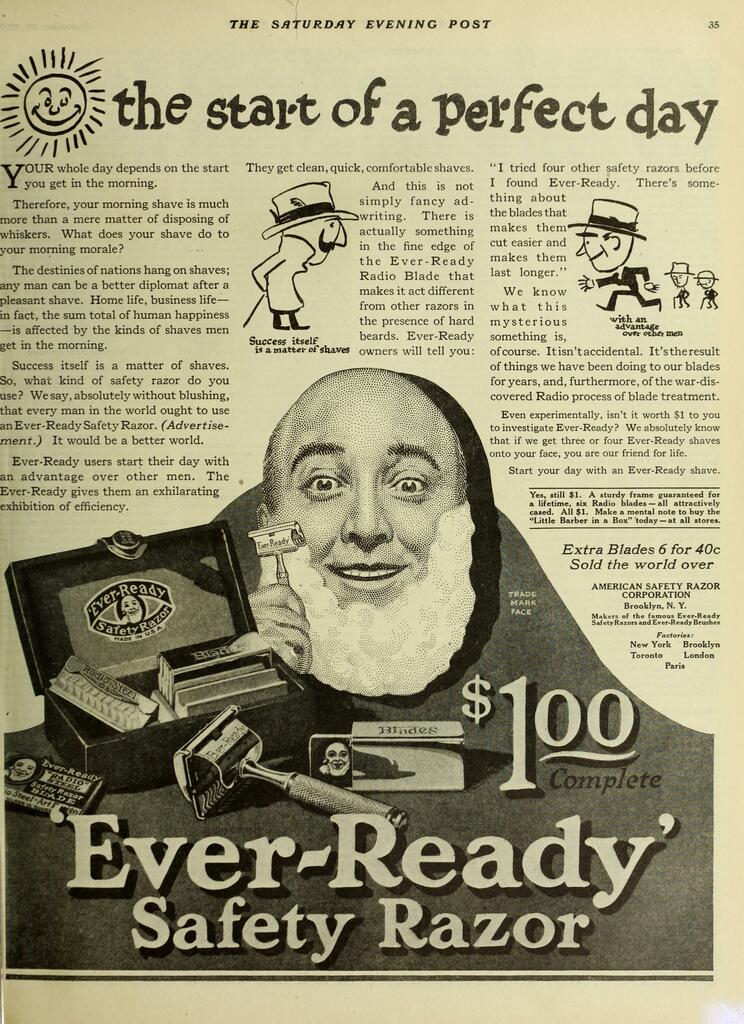
For starters, it’s a fairly long read. I’m used to advertisements being a couple of paragraphs long at most, but this? This is a couple of minutes to read, minimum. Secondly, it talks to the reader in a different way than todays fare. We’re not bombarded with claims of “best blade ever”, but instead treated to a polite little diversion into the idea that a good shave can improve your life and the world before a nudge towards the Radio blade as the blade you ought to try.
Part of the difference comes down to, I believe, the fact that today’s world is full of happenings. We haste from one thing to the next without taking time to sit down and enjoy… but in 1920 there was no internet, no cable network, nor no cell phone competing for our attention every second. So on a Saturday evening, a man could turn on the wireless and sit down to enjoy the evening newspaper – and have the time to read it.
Take the time to sit down and read the advertisement. Ponder what it has to say about shaving giving you an advantage. And ponder – as I have – what exactly the the war-discovered Radio process of blade treatment is.
Razor: Merkur 39C Slant
Blade: KAI stainless
Brush: Vie-Long #14033
Lather: Proraso Menthol & Eucalyptus
Aftershave: Proraso Liquid Cream After Shave
Additional Care: Alum Block
Most of us are happy with a single or double edge razor. Some want more than that, and I’m not talking about carts… I’m talking quad-edge. And I’m not talking about the one that Mr J K Waterman patented in 1909, no… This one is a bit newer, and was filed by Robert E Hamilton in 1924.
So lets see that Robert tried to achieve, that the offerings with fewer edges failed at:
…its prime object to generally improve upon such devices by providing a simple and efficient construction which will afford a maximum number of shaves with a minimum amount of trouble, one which is reliable, inexpensive to manufacture, easy to manipulate, strong, durable, and well adapted to the purpose for which it is designed.
US patent 1,721,113
As can be seen from the patent drawing, Robert’s razor features a massive – and I mean massive – head. The square top cap, plate, bottom plate, and handle is secured together in a somewhat convoluted way.. Lets quite Robert again:
A guard plate 7 having a square formation is provided with a concave inner surface indicated at 8 on which is mounted a U-shaped spring clip 9 by means of a screw 10. This verging terminals 11 and is adapted to be inserted through the square opening 2 so that its diverging terminals 11 overlap the outer face of the body 1. The upper face of the body 1 is of a substantially concaved formation and a square blade 12 is adapted to rest thereon being held in place by the guard plate 7. This blade is provided with four cutting edges and the corners thereof are prevented from contacting with the skin by guards 6. A bracket 14 is mounted on the outer face of the body 1 over the opening 2 and is provided with a threaded opening for receiving the reduced threaded extension 15 of a handle 16.
US patent 1,721,113
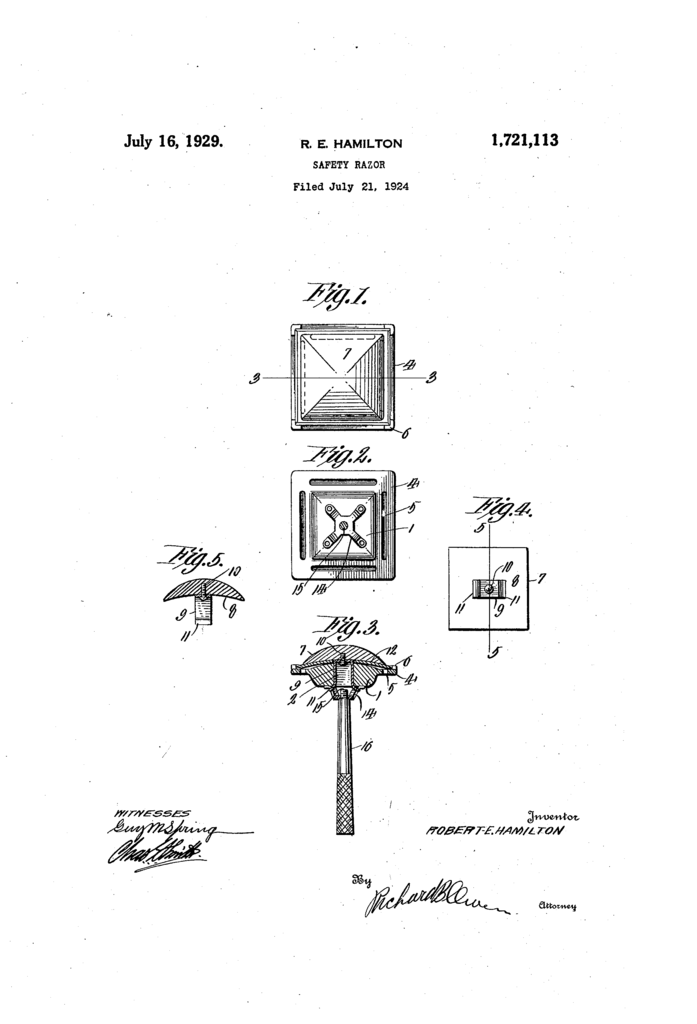
Clear as mud? No? Didn’t think so… as best I can make out you insert the four descending leaf springs from the top cap through the blade and into slots in the bottom plate. The handle just screws to the bottom plate, so you could in theory use aftermarket handles.
The whole patent can be read at Google Patents.
First of; it’s 2021 (and has been for a few days), and the annus horribilis that was 2020 is behind us. It is my sincere hope that this will be a better year than the last, and with that in mind let me wish you all “Til árs ok friðar!” – to a good year and peace! I hope your midwinter celebration – no matter what you call them – went well, and that each and everyone one of you is in good health.
Continue reading